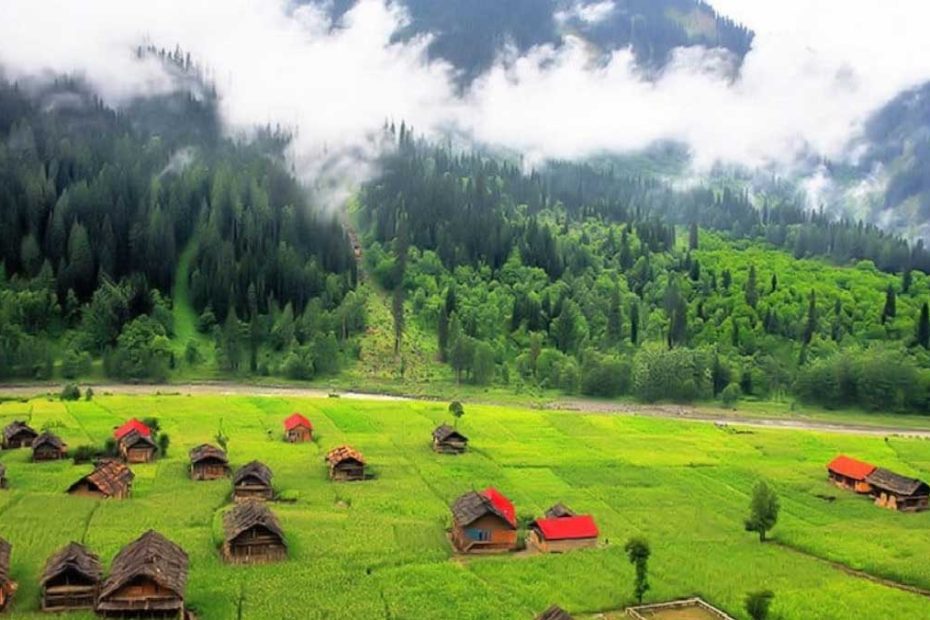Imagine spending two weeks exploring a land rich in culture, history, and natural beauty. Pakistan, often overshadowed by its neighbors, offers a treasure trove of experiences waiting to be discovered. From bustling cities to serene mountain landscapes, your journey through Pakistan promises unforgettable memories.
You’ll wander through ancient bazaars, marvel at architectural wonders, and savor mouth-watering cuisine. Whether you’re an adventure seeker or a history buff, this 2-week itinerary will guide you through the must-see destinations and hidden gems, ensuring you make the most of your time in this captivating country. Get ready to begin on an adventure like no other.
Key Takeaways
- Immerse in Pakistan’s diverse cultural heritage by visiting historical sites like Lahore Fort, Badshahi Mosque, and ancient bazaars.
- Experience the stunning natural beauty of northern Pakistan, including Gilgit-Baltistan, Hunza Valley, Fairy Meadows, and Skardu.
- Best times for travel are during spring (April-May) and autumn (September-October) for mild weather, though each season offers unique experiences.
- Transportation options include domestic flights for long distances, buses for budget travel, and private cars for flexibility in remote areas.
- Respect local customs by dressing modestly and following safety guidelines; ensure necessary travel documents and health precautions are in place.
- Budget-friendly travel with diverse accommodation options ranging from budget hostels to luxury hotels, along with affordable local dining experiences.

Why Visit Pakistan?
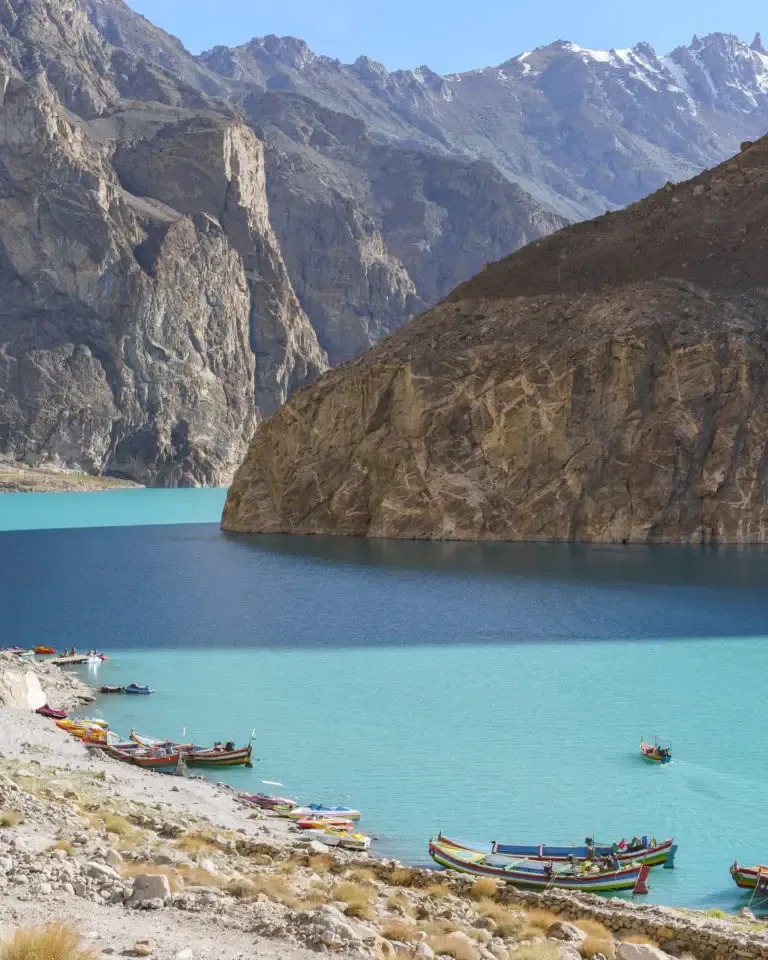
Pakistan’s a country rich in history, culture, and natural beauty, making it an attractive destination for travelers.
Cultural Heritage
Pakistan boasts a diverse and rich cultural heritage. Influences from Mughal, Ghaznavid, Ghurid, and British periods are evident across its cities. Lahore, often called the cultural capital, offers historical sites like Lahore Fort, Badshahi Mosque, Wazir Khan Mosque, and Jahangir’s Tomb. These sites showcase vibrant history and architectural splendor.
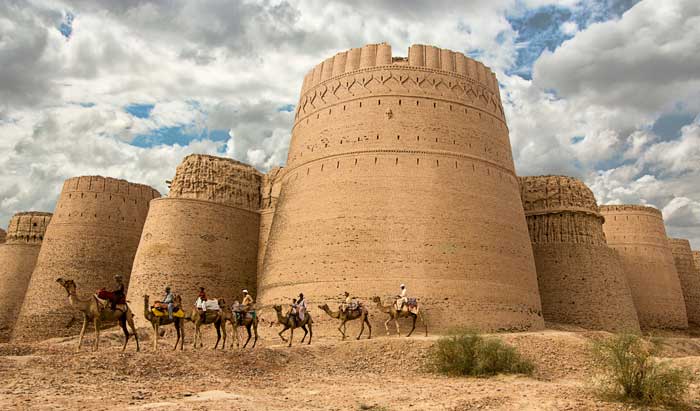
Natural Beauty
Pakistan’s home to stunning natural landscapes. The northern regions, such as Gilgit-Baltistan and the Karakoram range, feature breathtaking mountains, valleys, and lakes. Here are notable natural attractions:
- Gilgit-Baltistan: Known for its majestic peaks, including K2, the second-highest mountain in the world.
- Hunza Valley: Famous for its picturesque scenery and terraced fields.
- Fairy Meadows: Offers a close view of Nanga Parbat, one of the highest mountains.
- Skardu: Known for its serene lakes and towering mountains.
Practical Information
Pakistan experiences a varied climate. Summers (May-August) are hot, while winters (November-February) can be cold, especially in northern regions. Spring (March-April) and autumn (September-October) offer the best weather for travel.
Top Attractions
- Lahore Fort: Witness Mughal architecture and historical significance.
- Badshahi Mosque: Marvel at this grand structure, one of the largest mosques in the world.
- Wazir Khan Mosque: Famous for its intricate tile work and frescoes.
- K2: Ideal for adventure seekers and mountain climbers.
Hidden Gems
- Thar Desert: Explore the unique culture and world of this lesser-known region.
- Kalash Valleys: Experience the distinct culture and traditions of the Kalash people.
- Hingol National Park: Discover natural wonders like the Sphinx.
Accommodations
| City | Budget Options | Mid-Range Hotels | Luxury Stays |
|---|---|---|---|
| Lahore | Backpacker Hostels | Boutique Hotels | 5-Star Hotels |
| Islamabad | Guesthouses | Business Hotels | Luxury Hotels & Resorts |
| Karachi | Budget Inns | Mid-range Hotels | High-end Hotels |
| Skardu | Homestays | Standard Hotels | Boutique Guesthouses |
Dining Highlights
- Lahore: Enjoy local delicacies at traditional eateries like Anarkali Bazaar.
- Karachi: Savor seafood at restaurants along the coastline.
- Peshawar: Taste authentic kebabs at Namak Mandi.
- Islamabad: Experience diverse cuisines at cafes in F-7 Markaz.
Transportation & Practical Tips
- Domestic Flights: Useful for long-distance travel within the country.
- Buses: Affordable and frequent; major operators include Daewoo.
- Trains: A scenic way to explore the country, though not the fastest.
- Car Rentals: Available in major cities; recommended for visits to remote areas.
- Local Customs: Dress modestly and respect local traditions.
- Safety: Stay updated on travel advisories and follow local guidelines.
Seasonal Variations
Visiting in spring and autumn maximizes comfort and beauty. Summers provide lush landscapes, though temperatures can be high. Winters offer snow-capped adventures in the northern regions.
Sustainability Tips
- Respect Nature: Limit waste and keep environments pristine.
- Support Locals: Buy from local artisans and businesses.
- Eco-friendly Choices: Opt for accommodations practicing sustainability.
Budget Considerations
Traveling in Pakistan can be budget-friendly but varies based on preferences. Local meals cost around $2-$5, budget accommodations $10-$20, and mid-range options $50-$100. Adventure activities and guided tours might add extra cost.
This curated information aids in planning an enriching and immersive journey through Pakistan while ensuring practical considerations for a smooth, enjoyable experience.
When to Visit Pakistan
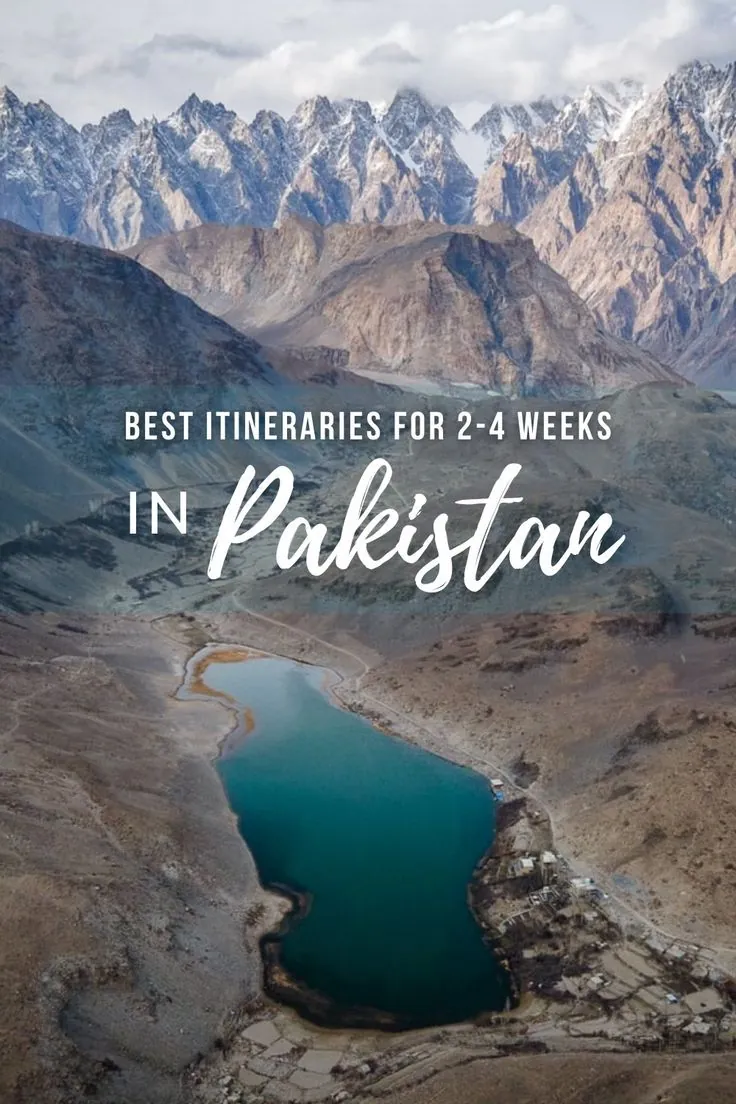
Timing your visit to Pakistan can significantly impact your experience, especially given the country’s varied climate.
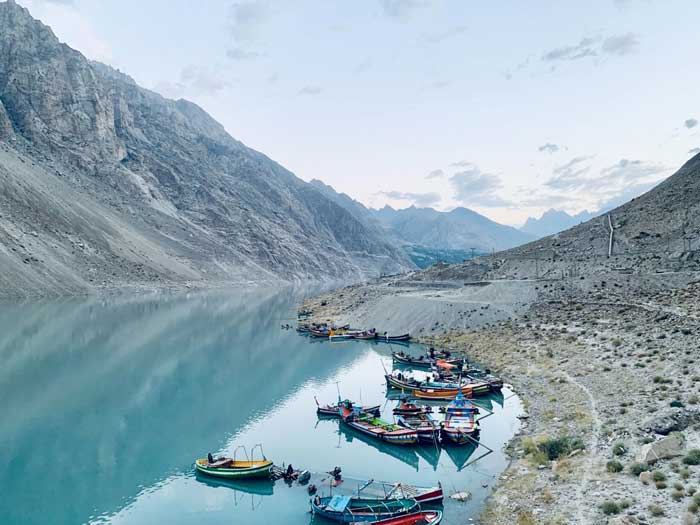
Best Time to Visit
The best times to visit Pakistan are during spring (April to May) and autumn (September to October). These seasons offer mild temperatures and clear skies, perfect for trekking, sightseeing, and immersing yourself in the natural beauty, particularly in the northern regions. For example, during these months, Hunza Valley showcases its stunning landscapes with blooming apricot trees in spring and vibrant fall foliage in autumn.
Summer
Summers (June to August) in Pakistan are challenging in the lower regions like Lahore and Islamabad due to extreme heat. In contrast, northern areas such as Gilgit-Baltistan and Swat Valley remain cooler but can still experience heatwaves. If considering a visit during summer, higher altitudes are preferable, though long road trips might be hindered by potential landslides. Skardu, known for its breathtaking vistas and rugged terrain, remains accessible but plan for sudden weather changes.
Winter
Winter (December to February) brings cold temperatures especially in the northern areas. Regions like Murree and Nathia Gali transform into winter wonderlands, attracting tourists for snow activities. But, if venturing into the north, anticipate freezing conditions and potentially treacherous roads. Lower regions, while cooler, remain more accessible, allowing for a pleasant exploration of historical sites in cities such as Lahore and Karachi.
This section ensures that you’re informed about the best times to visit and what to expect based on Pakistan’s diverse climate. The detailed seasonal insights help you plan appropriately for a two-week trip, making your journey both enjoyable and strategically timed.
Preparing for Your Trip
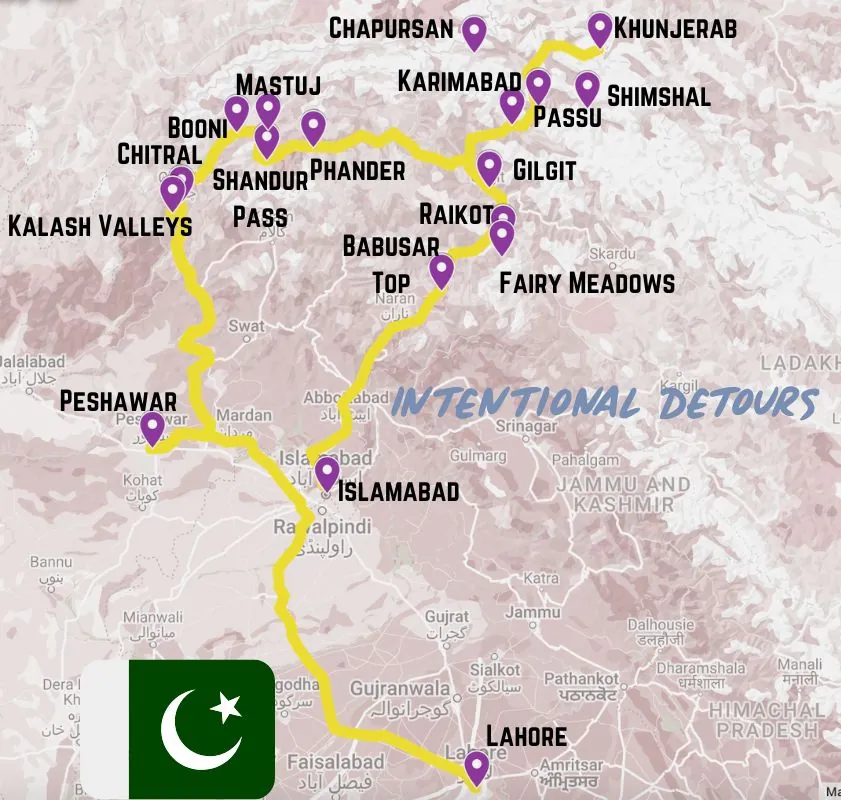
Preparing Documents and Visas
Ensure your passport is valid for at least six months beyond your planned departure date. Most travelers will need a visa to enter Pakistan. Apply online for an e-visa through the official Pakistan visa portal, making the process straightforward. Processing times can vary, so apply well in advance.
Immunizations and Health Precautions
Check the Centers for Disease Control and Prevention (CDC) website for recommended vaccines, including hepatitis A and B, typhoid, and polio. Consider bringing a basic first-aid kit and any personal medication you might need.
Currency and Budgeting
Pakistan uses the Pakistani Rupee (PKR). Exchange rates can fluctuate, so check the latest rates before you travel. ATMs are widely available in cities but carry cash when traveling to remote areas. Expect daily expenses for budget travelers to be around $30-40, while mid-range travelers might spend $60-80 per day.
Weather and Best Travel Time
Pakistan’s climate varies significantly by region. In spring (April to May) and autumn (September to October), the weather is mild and landscapes are beautiful. Summers (June to August) can be extremely hot, especially in southern regions, while winters (December to February) can be cold, particularly in northern areas.
Packing Essentials
Pack versatile clothing suitable for varying climates. Include lightweight, breathable fabrics for warmer areas, and layered, warm clothing for cooler regions. Respect local customs by dressing modestly. Bring comfortable walking shoes, a hat, sunglasses, sunscreen, and insect repellent. A power bank for your electronic devices can be helpful, as power outages can occur.
Connectivity and Communication
SIM cards are available at major airports and telecom stores. Telenor and Jazz are popular providers offering good coverage and affordable data packages. Keep friends and family updated on your whereabouts to enhance safety.
Environmental Considerations
Practice responsible tourism by minimizing plastic use. Bring a reusable water bottle and use water purification tablets or a portable filter. Respect natural sites and dispose of waste properly.
Prepare for an enriching trip by tackling these essentials, and you’ll be ready to explore the diverse beauty of Pakistan with confidence and ease.
Getting Around Pakistan
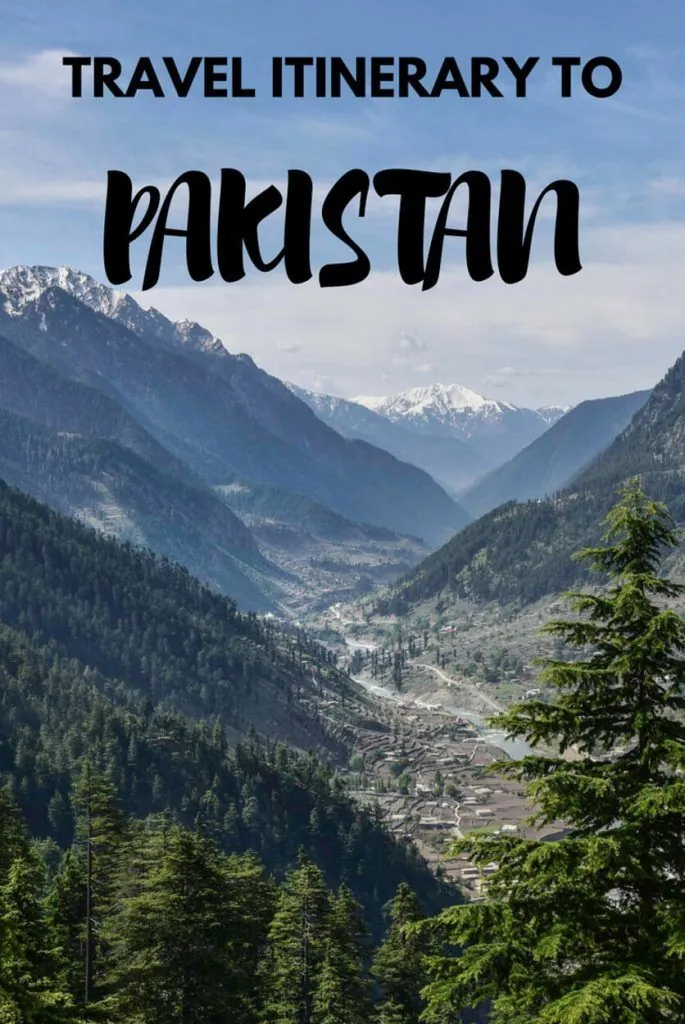
Exploring through Pakistan involves a blend of various transport options, each offering a unique way to experience the country’s diverse landscapes and bustling cities.
By Road
- Pakistan has an extensive road network, including the famous Karakoram Highway. This route is a must-see for its dramatic mountain scenery and breathtaking landscapes.
- For shorter distances, shared taxis (known as “coasters” or “wagons”) are common and affordable. You can hire these for specific routes or share them with other passengers.
- Private cars or hired vehicles provide comfort and flexibility. This option is particularly recommended for exploring remote areas where public transport may not be available.
By Bus
- Buses are popular for longer routes. Companies like NATCO and various private operators connect major cities such as Islamabad, Lahore, and Peshawar to the northern regions.
- Buses offer a reliable and cost-effective way to travel long distances. They typically offer different service levels, from basic to luxury, accommodating various budget preferences.
By Air
Although not covered in the previous content, domestic flights are an efficient way to travel between major cities. Airlines like Pakistan International Airlines (PIA) and Airblue operate regular flights, making it easier to cover longer distances quickly.
By Train
Trains offer a scenic and leisurely travel experience. The Pakistan Railways network connects urban centers and rural areas. While slower than other options, trains provide a unique way to observe the countryside.
- Keep local currency (Pakistani Rupee, PKR) handy for transportation fare.
- Consider your itinerary and choose transport methods that align with your schedule.
- For safety, select reputable transportation providers and check recent reviews when possible.
- Book tickets in advance during peak travel seasons to ensure availability.
Incorporate these transportation options to maximize your exploration of Pakistan’s rich cultural world and stunning natural beauty during your two-week itinerary.
Day-by-Day Itinerary
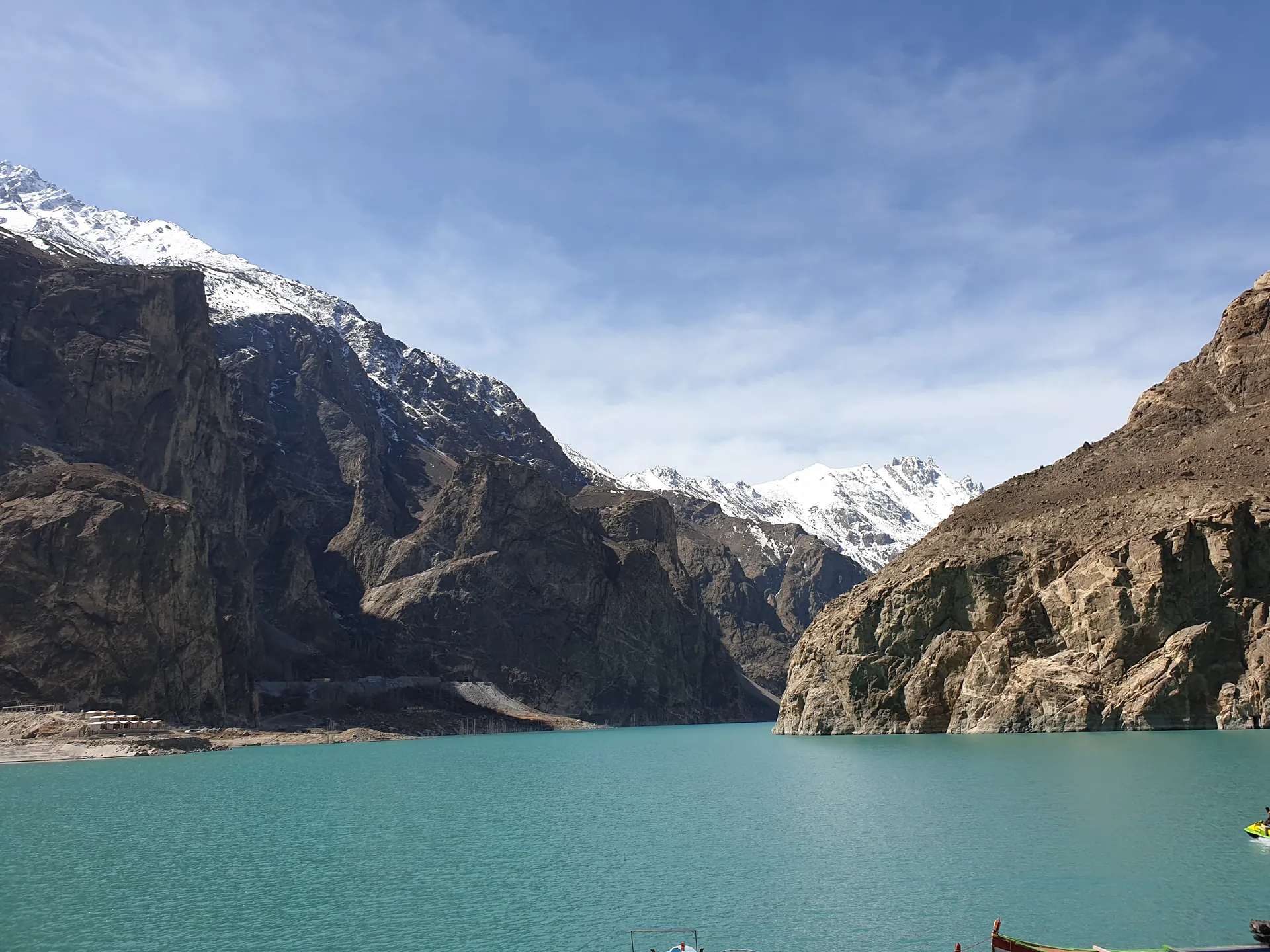
Day 1-2: Lahore
Lahore, the cultural heart of Pakistan, offers a jump into rich history and vibrant traditions.
Top Attractions
- Badshahi Mosque: One of the largest mosques worldwide.
- Wazir Khan Mosque: Renowned for its frescoes and tile work.
- Lahore Fort: A UNESCO World Heritage Site with a legacy of Mughal and Sikh rulers.
- Shalimar Gardens: A Mughal-era garden.
- Shahi Hammam: A restored Mughal bathhouse.
- Walled City: Narrow alleys, ancient gates, and bustling markets.
Hidden Gems
- Sufi Shrines: Unique spiritual experiences at Data Darbar.
- Sikh Shrines: Visit the Samadhi of Ranjit Singh.
Accommodations
| Hotel | Price (per night) | Amenities | Location |
|---|---|---|---|
| Pearl Continental | $180 | Pool, Spa, Restaurants | Central Lahore |
| Lahore Continental | $80 | Breakfast, Airport Shuttle | Near Airport |
| Heritage Luxury Suites | $120 | Kitchenette, Free Wi-Fi | Gulberg |
Dining Highlights
- Food Street: Traditional Pakistani cuisine.
- Café Aylanto: Fusion dishes in an elegant setting.
- Haveli Restaurant: Dinner with a view of Badshahi Mosque.
Transportation & Practical Tips
- Auto-Rickshaws: Convenient for short distances.
- Metro Bus: Reliable for traveling longer routes within the city.
- Ride-Hailing Apps: Efficient for exploring.
Day 3-4: Islamabad and Rawalpindi
Explore the capital city Islamabad and its twin, Rawalpindi, with their modern infrastructures and historical sites.
Top Attractions
- Faisal Mosque: Largest mosque in Pakistan.
- Margalla Hills: Hiking with panoramic views.
- Rawalpindi Old City: Markets and traditional bazaars.
Hidden Gems
- Lok Virsa Museum: Preserves Pakistan’s cultural heritage.
- Daman-e-Koh: Viewpoint with city vistas.
Accommodations
| Hotel | Price (per night) | Amenities | Location |
|---|---|---|---|
| Serena Hotel | $220 | Pool, Spa, Fitness Center | Central Islamabad |
| Ramada Islamabad | $150 | Airport Shuttle, Free Wi-Fi | Near Airport |
| Hotel One Mall Road | $100 | Breakfast, Business Center | Rawalpindi |
Dining Highlights
- Monal Restaurant: Dining with views of Islamabad.
- Butt Karahi: Famous for its traditional karahi dishes.
- Street Food: Shawarma, chaat, and golgappa.
Transportation & Practical Tips
- Metro Bus: Connects Islamabad with Rawalpindi.
- Taxis: Readily available.
- Rent-A-Car: Ideal for flexibility.
Day 5-6: Fairy Meadows and Nanga Parbat
Experience the majestic Fairy Meadows, known for its breathtaking scenery, and Nanga Parbat, one of the world’s highest peaks.
Top Attractions
- Fairy Meadows: Campsites with views of Nanga Parbat.
- Nanga Parbat Base Camp: Trekking for adventure enthusiasts.
Hidden Gems
- Raikot Bridge: Starting point for the trek.
- Nanga Parbat Viewpoint: Perfect for photography.
Accommodations
| Camp | Price (per night) | Amenities | Location |
|---|---|---|---|
| Raikot Sarai Camp | $40 | View of Nanga Parbat, Basic Facilities | Fairy Meadows |
| Fairy Meadows Cottage | $60 | Traditional Meals, Guided Tours | Fairy Meadows |
| Greenland Resort | $100 | Heated Rooms, Family Cottages | Near Meadows |
Dining Highlights
- Camp Meals: Simple but hearty.
- Local Restaurants: Traditional dishes.
Transportation & Practical Tips
- Jeeps: Essential for reaching Raikot Bridge.
- Hiking Gear: Must pack for trekking.
- Guides: Recommended for safety.
Day 7: Gilgit
Discover the serene city of Gilgit, a gateway to northern Pakistan.
Top Attractions
- Kargha Buddha: Ancient rock carvings.
- Gilgit Bridge: Old suspension bridge.
Hidden Gems
- Polo Grounds: Watch a match.
- Naltar Valley: Known for its lakes.
Accommodations
| Hotel | Price (per night) | Amenities | Location |
|---|---|---|---|
| Serena Gilgit | $200 | Pool, Spa, Restaurant | Gilgit City |
| Gilgit Serena Lodge | $150 | Garden View, Free Wi-Fi | Near Market |
| Rakaposhi View | $70 | Mountain View, Breakfast | Gilgit City |
Dining Highlights
- Local Dhabas: Try chapshuro and momos.
- Serena Restaurant: Diverse menu options.
Transportation & Practical Tips
- Shared Taxis: Common for local travel.
- Private Cars: Ideal for visiting nearby valleys.
- Local Guides: Helpful for exploring.
Day 8-9: Karimabad and Hunza Valley
Explore Hunza Valley, famous for its stunning landscapes and historical sites in Karimabad.
Top Attractions
- Baltit Fort: Historical fort with a view.
- Altit Fort: Preserved ancient fort.
Hidden Gems
- Eagle’s Nest: Panoramic view of Hunza.
- Passu Cones: Distinct rock formations.
Accommodations
| Hotel | Price (per night) | Amenities | Location |
|---|---|---|---|
| Hunza Serena Inn | $180 | Mountain Views, Garden | Karimabad |
| Eagle’s Nest Hotel | $150 | Viewpoint, Traditional Meals | Duikar |
| Luxus Hunza Resort | $280 | Spa, Fitness Center | Karimabad |
Dining Highlights
- Hidden Paradise Restaurant: Local specialties.
- Cafe de Hunza: Popular for walnut cake.
Transportation & Practical Tips
- Buses: Connect Gilgit to Hunza.
- ATVs: Used for local exploring.
- Local Markets: Buy souvenirs.
Day 10-11: Upper Hunza and Khunjerab Pass
Journey to Upper Hunza and visit the highest paved border crossing.
Top Attractions
- Khunjerab Pass: Gateway to China, highest border in the world.
- Attabad Lake: Formed by landslide, offering boating.
Hidden Gems
- Gulmit Village: Traditional handicrafts.
- Hussaini Suspension Bridge: Adventure crossing.
Accommodations
| Hotel | Price (per night) | Amenities | Location |
|---|---|---|---|
| Passu Ambassador | $120 | Mountain View, Local Cuisine | Passu |
| Silk Route Lodge | $90 | Traditional Hospitality | Upper Hunza |
| Khunjerab Pass Motel | $60 | Basic Amenities, Near Pass | Near Pass |
Dining Highlights
- Local Inns: Fresh trout dishes.
- Ethnic Cafes: Serving regional specialties.
Transportation & Practical Tips
- Hiring Jeeps: Necessary for rugged roads.
- Warm Clothing: High-altitude climate.
- Permits: Required for Khunjerab Pass.
Day 12: Return to Gilgit
Head back to Gilgit for a day of rest and local exploration.
Top Attractions
- NLI Market: Place for souvenirs.
- China Market: Chinese goods and local crafts.
Hidden Gems
- Buddhist Stupas: Ancient relics.
Accommodations
| Hotel | Price (per night) | Amenities | Location |
|---|---|---|---|
| Gilgit Serena Hotel | $200 | Pool, Spa, Restaurant | Gilgit City |
| Hotel Canopy | $120 | Free Breakfast, Garden | Central Gilgit |
| Rakaposhi View Hotel | $70 | Budget, Breakfast | Gilgit City |
Dining Highlights
- Local Cuisine: Regional dishes in dhabas.
- Hotel Restaurants: International and local menus.
Transportation & Practical Tips
- Taxis: For local travel.
- Souvenir Shopping: Visit local markets.
- Relaxation: Rest before long journeys.
Day 13: Return to Islamabad
Travel back to Islamabad to wrap up your northern adventure.
Top Attractions
- Rawal Lake: Picnic and boating.
- Saidpur Village: Cultural village with artisan shops.
Hidden Gems
- Japanese Park: Quiet spot in the city.
- Rose and Jasmine Garden: Beautiful blooms.
Accommodations
| Hotel | Price (per night) | Amenities | Location |
|---|---|---|---|
| Islamabad Serena Hotel | $280 | Spa, Pool, Luxury Rooms | Central Islamabad |
| Marriott Islamabad | $200 | Business Center, Fitness Room | Near Diplomatic Enclave |
| Hill View Hotel | $100 | Budget, Free Breakfast | Near Margalla Hills |
Dining Highlights
- Diplomatic Enclave Cafes: Diverse food options.
- Traditional Eateries: Authentic Pakistani cuisine.
Transportation & Practical Tips
- Domestic Flights: Quick travel back.
- Buses: Economical options.
- Booking In Advance: Ensure availability.
Day 14: Departure from Islamabad
Prepare for departure and reflect on your journey.
Top Attractions
- Souvenirs: Last-minute shopping at Centaurus Mall.
- Airport: Ensure timely arrival.
Hidden Gems
- Islamabad Park: Relax before flight.
- Saidpur Village: Final cultural experience.
- Airport Transfer: Arranged by accommodations.
- Flight Check-In: Online for convenience.
- Packing Essentials: Ensure all valuables.
Journey through Pakistan’s natural beauty, cultural richness, and historical depth offers an unforgettable travel experience. Ensure you capture memories, savor local flavors, and embrace the diverse landscapes.
Additional Tips and Considerations
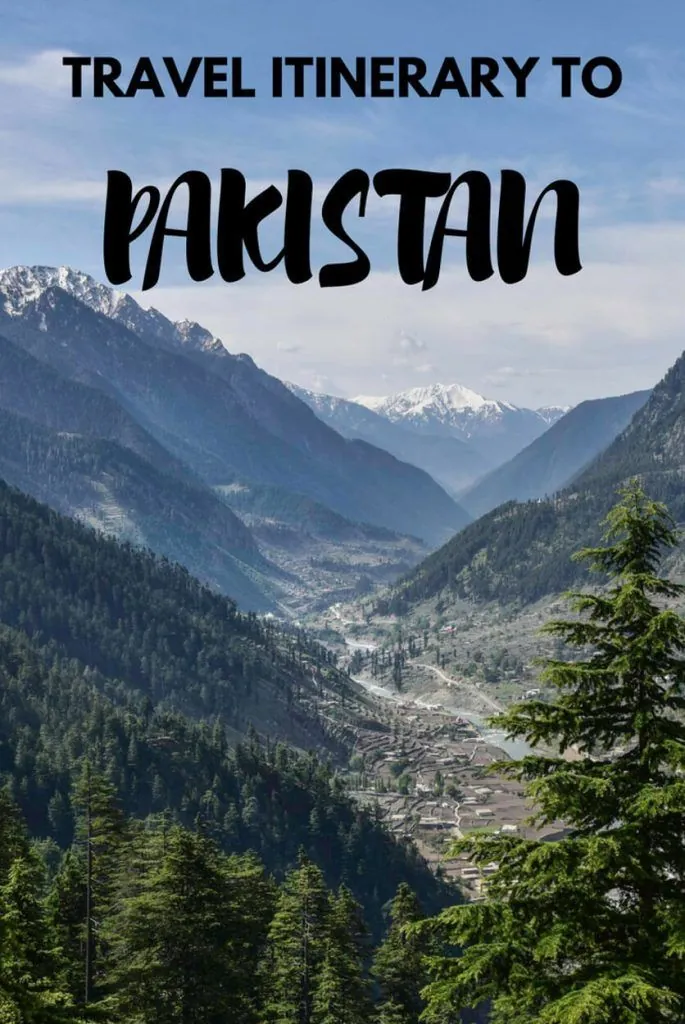
Make the most of your two-week itinerary in Pakistan with these additional tips and considerations. Ensure a seamless and enriching experience focusing to practical aspects like weather, local customs, and transportation.
Weather and Seasonal Considerations
Pakistan has diverse climate zones, so pack accordingly. Spring (April to May) and autumn (September to October) offer mild temperatures and beautiful landscapes. Summer can be hot in the south but pleasant in the north, whereas winter brings cold to most regions, with snow in the northern areas.
Cultural Etiquette and Local Customs
Respect local culture by dressing modestly, especially when visiting religious sites like mosques and shrines. Women should consider wearing a headscarf in conservative areas. Always ask for permission before photographing people.
Transportation Tips
Transportation varies by region. Domestic flights are efficient for long distances; for example, flying from Lahore to Gilgit saves time. Buses and trains are budget-friendly; but, they can be long and uncomfortable. Renting a car offers flexibility but may require exploring challenging roads, especially in mountainous areas.
Health and Safety
Carry essential medications and a basic first-aid kit. Tap water isn’t safe for drinking, so opt for bottled water or a water purifier. Be cautious of food hygiene; stick to reputable restaurants and busy food stalls.
Language and Communication
Urdu is the national language, but English is widely understood in cities. Learning a few basic Urdu phrases can enhance your interactions. Mobile SIM cards and internet packages are affordable; consider purchasing one upon arrival for seamless connectivity.
Budgeting Tips
Traveling in Pakistan is budget-friendly. Here’s a general cost estimate:
| Expense | Average Cost (USD) |
|---|---|
| Accommodation | $15-50 per night |
| Meals | $2-10 per meal |
| Domestic Flights | $50-100 one-way |
| Bus/Train Rides | $5-20 |
| Entry Fees | $1-5 per site |
Sustainability Tips
Practice responsible tourism by minimizing your environmental impact. Use reusable bottles, avoid single-use plastics, and participate in eco-friendly tours. Respect wildlife and natural habitats, especially in protected areas like national parks.
Local Festivals and Events
Participate in local festivals for an immersive cultural experience. The Lahore Literary Festival (February) celebrates literature, while the Shandur Polo Festival (July) in Chitral offers thrilling polo matches in a stunning setting.
Emergency Contacts
Keep a list of emergency contacts handy:
- Police: 15
- Ambulance: 1122
- Fire Brigade: 16
- Nearest Embassy or Consulate
These tips ensure a well-rounded and enjoyable journey through Pakistan, allowing you to focus on experiencing its rich culture and breathtaking landscapes.
Conclusion
Embarking on a two-week journey through Pakistan promises an unforgettable adventure filled with cultural richness and natural splendor. Whether you’re exploring the historic landmarks of Lahore or marveling at the majestic mountains of Hunza Valley, every moment offers a unique experience.
With practical tips and a well-rounded itinerary, you’re well-prepared to navigate the diverse landscapes and vibrant cities. From savoring local cuisine to practicing responsible tourism, your trip will be both enriching and sustainable.
Get ready to immerse yourself in Pakistan’s captivating beauty and heritage, making memories that will last a lifetime.
Frequently Asked Questions
How long do I need to travel around Pakistan?
For a comprehensive experience of both North and South Pakistan, a two-week journey is a good start. However, to truly immerse yourself in everything the country offers, including all major attractions and hidden gems, three months would be ideal.
What makes Pakistan a notable tourist destination?
Pakistan boasts several UNESCO World Heritage sites, such as the Lahore Fort, Shalamar Gardens, and the Archaeological Ruins at Moenjodaro. Its rich cultural history, stunning landscapes, and warm hospitality make it a unique travel destination.
Which areas are considered safe for travelers in Pakistan?
Regions like Hunza Valley in Gilgit-Baltistan are known for their safety and welcoming locals. These areas offer incredible hikes and breathtaking scenery, making them popular and secure destinations for tourists.
When is the hottest month to visit Pakistan?
June is the hottest month in Pakistan, with scorching temperatures and dry, dusty storms. The period from mid-April to late October generally experiences high temperatures, with May and June being particularly extreme.
Is it safe to travel to Pakistan as a tourist?
While Pakistan has areas with heightened risks due to terrorism, many regions are safe for tourists. Research and stick to safer destinations, such as Hunza Valley and Gilgit-Baltistan, and always stay updated on travel advisories.
What are the best times to visit Pakistan?
The best times to visit Pakistan are during spring (April to May) and autumn (September to October). During these months, temperatures are mild, and landscapes are particularly beautiful, making for an optimal travel experience.
What practical tips should I follow while traveling in Pakistan?
Travelers should pack appropriately for varying climates, stay connected, practice responsible tourism, and respect local cultural etiquette. Knowing basic phrases in Urdu, planning health and safety precautions, and budgeting for different regions can contribute to a seamless travel experience.
What unique experiences does the two-week Pakistan itinerary offer?
The two-week itinerary includes Lahore’s cultural sites, Islamabad’s modern attractions, and the natural beauty of Gilgit-Baltistan and Hunza Valley. It combines historical exploration, luxurious dining, and adventure activities, providing a well-rounded experience of Pakistan.

